 | TODAY IN SCIENCE HISTORY NEWSLETTER - 20 FEBRUARY |
| Feature for Today |
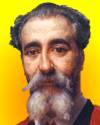 On 20 Feb 1907, Henri Moissan died, aged 54. He is yet another example of one of the great chemists of yesteryear whose name most students of chemistry will not recognize. He might get a mention in a textbook, enough to say "Fluorine was first isolated by Henri Moissan in 1886." The textbook will inform you of the great reactivity of fluorine, etc., etc., and yet not go in to detail on how this made the task of separating it from its compounds an extreme challenge. On 20 Feb 1907, Henri Moissan died, aged 54. He is yet another example of one of the great chemists of yesteryear whose name most students of chemistry will not recognize. He might get a mention in a textbook, enough to say "Fluorine was first isolated by Henri Moissan in 1886." The textbook will inform you of the great reactivity of fluorine, etc., etc., and yet not go in to detail on how this made the task of separating it from its compounds an extreme challenge.Others before Moissan knew of the element fluorine, from its compounds, but never were able to isolate it. Not even the great Humphry Davy (who isolated the reactive sodium and potassium elements). Fluorine is a nasty gas. Toxic, and injurious far beyond even the effects of chlorine, its room-mate on the Periodic Table. Some say Moissan's life was probably shortened as a result of exposure to fluorine and toxic compounds during his extensive research on the element, though the immediately apparent cause of death was acute appendicitis. He lived long enough to be awarded a Nobel Prize in 1906, recognising his accomplishments, not only in isolating fluorine, but also for inventing an electric arc furnace than enabled studying chemical reactions at far higher temperatures than were possible before. Today you can read a talk on Fluorine given by Moissan himself, and learn first-hand about the history of research of fluorine compounds by great chemists before he managed to isolate it. He describes how he figured out a way to pry fluorine loose from a compound, and its dazzling attacks on other elements. As you read, perhaps you can imagine Moissan at the lecture podium! As if you were there, feel the excitement of the audience hearing the story of Fluorine, in his own words, directly from the man that isolated the element. More on his work with the electric arc furnace he devised, and his pursuit of artificial diamonds made from charcoal, can be read in this Obituary. For a different topic, related to 20 Feb 1835, there is interesting reading in the about the experience of a scientist (who you'll name in the quiz below) of a dramatic earthquake in Chile and the changes it caused in local volcanic activity. This was impressive evidence that major changes were occuring on the Earth's surface, even in his present time, quite contradictory to the uniformitarian views of his contemporaries. Read a description in this book extract, compiled in 1879 based on the scientist's own narrative. |
| Book of the Day | |
| |
| Quotations for Today | |
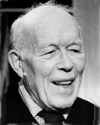 | "One great discovery does not betoken a great scientist; science now and then selects insignificant standard bearers to display its banners." |
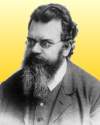 | "S = k log Ω." |
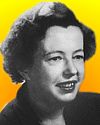 | "Mathematics began to seem too much like puzzle solving. Physics is puzzle solving, too, but of puzzles created by nature, not by the mind of man." |
| QUIZ | |
| Before you look at today's web page, see if you can answer some of these questions about the events that happened on this day. Some of the names are very familiar. Others will likely stump you. Tickle your curiosity with these questions, then check your answers on today's web page. | |
| Births | |
 |  René (Jules) Dubos was a French-born American microbiologist, born 20 Feb 1901, who pioneered research in isolating antibacterial substances from certain microorganisms and the discovery of major antibiotics. He died on 20 Feb 1901. René (Jules) Dubos was a French-born American microbiologist, born 20 Feb 1901, who pioneered research in isolating antibacterial substances from certain microorganisms and the discovery of major antibiotics. He died on 20 Feb 1901. |
| Deaths | |
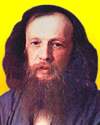 |  A Russian chemist (1834-1907) developed the periodic classification of the elements. In his final version of the periodic table (1871) he left gaps, foretelling that they would be filled by elements not then known and predicting the properties of three of those elements. A Russian chemist (1834-1907) developed the periodic classification of the elements. In his final version of the periodic table (1871) he left gaps, foretelling that they would be filled by elements not then known and predicting the properties of three of those elements. |
 |  Henri Moissan (1852-1907) was a French chemist who received the 1906 Nobel Prize for Chemistry for the isolation of a highly reactive gaseous element, and the development of the Moissan electric furnace. From 1892, with an electric arc furnace he designed, Moissan began experimenting with reactions possible at much higher temperatures than before and discovered many new compounds and was able to vaporize substances previously impossible. Henri Moissan (1852-1907) was a French chemist who received the 1906 Nobel Prize for Chemistry for the isolation of a highly reactive gaseous element, and the development of the Moissan electric furnace. From 1892, with an electric arc furnace he designed, Moissan began experimenting with reactions possible at much higher temperatures than before and discovered many new compounds and was able to vaporize substances previously impossible. |
| Events | |
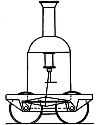 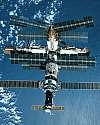 |  On 20 Feb of a certain year, the Soviet Union launched into orbit Mir, a new space station. Mir, the Russian word for peace, had six docking ports, special laboratories for scientific research and improved cabins for cosmonauts. Weeks later, a veteran crew was sent to man the 56-foot-long and 13.6-foot wide station. On 20 Feb of a certain year, the Soviet Union launched into orbit Mir, a new space station. Mir, the Russian word for peace, had six docking ports, special laboratories for scientific research and improved cabins for cosmonauts. Weeks later, a veteran crew was sent to man the 56-foot-long and 13.6-foot wide station.  In which decade was this launch made? In which decade was this launch made? |
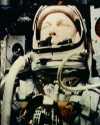 |  On 20 Feb 1962, John Glenn piloted the Mercury-Atlas 6 Friendship 7 spacecraft on the first U.S. manned orbital mission. Launched from Kennedy Space Center, Florida, he orbited the earth, at a maximum altitude of approx. 162 miles and an orbital velocity of approx. 17,500 mph. He spotted Perth, Australia, when that city's residents greeted him by switching on their house lights in unison. On 20 Feb 1962, John Glenn piloted the Mercury-Atlas 6 Friendship 7 spacecraft on the first U.S. manned orbital mission. Launched from Kennedy Space Center, Florida, he orbited the earth, at a maximum altitude of approx. 162 miles and an orbital velocity of approx. 17,500 mph. He spotted Perth, Australia, when that city's residents greeted him by switching on their house lights in unison.  How many orbits were made on this mission? How many orbits were made on this mission? |
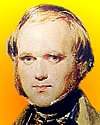 |  On 20 Feb 1835, in Chile, a travelling scientist experienced a very strong earthquake and shortly afterward saw evidence of several feet of uplift in the region. From measurements repeated a few days later, he found the land had risen several feet. This demonstrated that nature itself produces geological changes even in our own time. On 20 Feb 1835, in Chile, a travelling scientist experienced a very strong earthquake and shortly afterward saw evidence of several feet of uplift in the region. From measurements repeated a few days later, he found the land had risen several feet. This demonstrated that nature itself produces geological changes even in our own time. |
| Answers |
When you have your answers ready to all the questions above, you'll find all the information to check them, and more, on the February 20 web page of Today in Science History. Or, try this link first for just the brief answers. Fast answers for the previous newsletter for February 19: a ratio, for instance 20/20, measuring the acuity of a person's eyesight compared to a standard observer with good vision; glucose; Austrian; the decade including the year 1831; hydrogen sulphide; the nursery rhyme, "Mary had a little lamb." |
| Feedback |
 If you enjoy this newsletter, the website, or wish to offer encouragement or ideas, please send feedback by using your mail reader Reply button. If you enjoy this newsletter, the website, or wish to offer encouragement or ideas, please send feedback by using your mail reader Reply button. |
--
If you do not want to receive any more newsletters, this link
To update your preferences and to unsubscribe visit this link
If you do not want to receive any more newsletters, this link
To update your preferences and to unsubscribe visit this link
! !



Δεν υπάρχουν σχόλια:
Δημοσίευση σχολίου